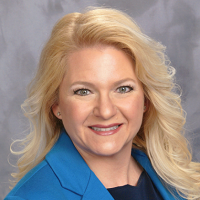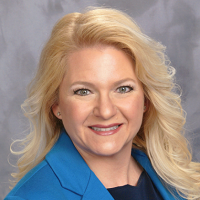Do You Know How Much You've Saved in Your 401(k)?
And are you sure you're enrolled in one? A surprising number of workers don't know where they stand with their company's retirement plan. Time to find out.


A major perk for many of us when deciding whether to work for an employer is their retirement savings program — or lack thereof. A 401(k) is a tax-advantaged retirement plan that allows employees to contribute a certain percentage of their paycheck into a subsequent individual account sponsored by their employer. With the end of the year approaching fast, now is a great time to check in on your retirement plan, specifically your 401(k).
A recent Retirement Security Survey conducted by Principal Financial Group found that around 6 in 10 respondents, or a stark 59%, wrongly believed they were contributing to a 401(k) retirement plan. The survey also suggests that a lack of understanding when it comes to eligibility requirements and enrollment is largely contributing to lower participation rates. Unfortunately, ignorance isn’t bliss when it comes to financially securing your future, and the following four steps can help you get started.
1. Review and understand eligibility requirements and check enrollment status
According to Principal’s survey, 22% of respondents said they weren’t sure if they were eligible to participate in their company’s retirement program. The report says some of this could be due to differing enrollment processes from previous jobs.
From just $107.88 $24.99 for Kiplinger Personal Finance
Become a smarter, better informed investor. Subscribe from just $107.88 $24.99, plus get up to 4 Special Issues

Sign up for Kiplinger’s Free Newsletters
Profit and prosper with the best of expert advice on investing, taxes, retirement, personal finance and more - straight to your e-mail.
Profit and prosper with the best of expert advice - straight to your e-mail.
For example, they may have been automatically enrolled in a retirement plan from a former employer — assuming that’s how every plan works. Requirements for various plans can be hard to understand, so consult with your human resources department if you have questions.
2. Know how much you should contribute
Once you’re enrolled, you’ll need to decide how much you should contribute to this retirement account each pay cycle. If you’re lucky enough to receive an employer match, know up to what percentage they match and contribute that amount if you can.
A financial adviser can help you determine an amount that suits your individual needs. (To find out the contribution limits for 401(k)s, see the article Higher IRA and 401(k) Contribution Limits for 2024.)
3. Check your balance
This might be less important for younger workers, but as you get closer to retirement, it’s important to review your balance quarterly. Not knowing your balance can make it hard to know whether you’re on track to meet your retirement goals. The last thing you want is to misjudge your ability to afford retirement, potentially forcing you to work longer than originally planned, or return to work after reaching retirement.
Similarly, if you’re younger, it’s a good idea to know how much you’ve saved each year. This is a great benchmark for kickstarting your retirement plan — helping you understand the rate at which you’re saving.
From there, you can explore other retirement savings vehicles to help you reach your goals. (To find out how your balance compares to others’, see the article The Average 401(k) Balance by Age.)
4. Set a savings goal
If you’re contributing to a 401(k), you should be setting a savings goal. Without one, you may be saving erratically. A financial professional can review your specific plan in comparison to your paycheck to help you determine the appropriate amount to contribute each pay period.
We spend a sizable amount of our lives working — not only to be able to afford the cost of living today but, hopefully, to enjoy some much-deserved freedom in our retirement years. Now is a good time to review your plan, or start creating one if you haven’t.
Cynthia Pruemm is an investment advisory representative of and provides advisory services through CoreCap Advisors, LLC. SIS Financial Group is a separate entity and not affiliated with CoreCap Advisors. The information provided here is not tax, investment or financial advice. You should consult with a licensed professional for advice concerning your specific situation.
Related Content
- Is a 401(k) Worth It? Here are the Pros and Cons
- Roth 401(k) vs. 401(k): Which Is Right for You?
- Using Your 401(k) to Delay Getting Social Security and Increase Payments
- 401(k) Plans: What You Need to Know Now
- Rolling Over a 401(k) into an IRA
Profit and prosper with the best of Kiplinger's advice on investing, taxes, retirement, personal finance and much more. Delivered daily. Enter your email in the box and click Sign Me Up.

Cynthia Pruemm, Founder and CEO of SIS Financial Group, specializes in financial planning, asset protection and transitional planning. Prior to starting SIS Financial Group, Cynthia served as State Director for two of America’s largest senior market agencies, where she also served as a member of the Chairmen’s Council and met her husband, Hagen. Because of their shared desire to help people during the next chapter in their lives, they founded SIS Financial Group.
-
 The Santa Claus Rally Officially Begins: Stock Market Today
The Santa Claus Rally Officially Begins: Stock Market TodayThe Santa Claus Rally is officially on as of Wednesday's closing bell, and initial returns are positive.
-
 How to Leave Different Amounts to Adult Children Without Causing a Rift
How to Leave Different Amounts to Adult Children Without Causing a RiftHere’s how to leave different amounts to adult children without causing a family rift.
-
 My Retirement Learning Curve, 1 Year In
My Retirement Learning Curve, 1 Year InA retiree checks in with what they wish they knew early on and what they've changed about their plan one year in.
-
 The Santa Claus Rally Officially Begins: Stock Market Today
The Santa Claus Rally Officially Begins: Stock Market TodayThe Santa Claus Rally is officially on as of Wednesday's closing bell, and initial returns are positive.
-
 How to Leave Different Amounts to Adult Children Without Causing a Rift
How to Leave Different Amounts to Adult Children Without Causing a RiftHere’s how to leave different amounts to adult children without causing a family rift.
-
 My Retirement Learning Curve, 1 Year In
My Retirement Learning Curve, 1 Year InA retiree checks in with what they wish they knew early on and what they've changed about their plan one year in.
-
 Introducing Your CD's Edgier Cousin: The Market-Linked CD
Introducing Your CD's Edgier Cousin: The Market-Linked CDTraditional CDs are a safe option for savers, but they don't always beat inflation. Should you try their counterparts, market-linked CDs, for better returns?
-
 'Humbug!' Say Consumers, Despite Hot GDP: Stock Market Today
'Humbug!' Say Consumers, Despite Hot GDP: Stock Market Today"The stock market is not the economy," they say, but both things are up. Yet one survey says people are still feeling down in the middle of this complex season.
-
 The SEC Is Concerned for Older Investors and Retirement Savers. Here's What You Should Know.
The SEC Is Concerned for Older Investors and Retirement Savers. Here's What You Should Know.The SEC focusing on older investors, retirement and college savers, and private securities. Here's how those changes impact you.
-
 Vesting, Catch-Ups and Roths: The 401(k) Knowledge Quiz
Vesting, Catch-Ups and Roths: The 401(k) Knowledge QuizQuiz Test your understanding of key 401(k) concepts with our quick quiz.
-
 Why You Should Pay Attention to Company Guidance
Why You Should Pay Attention to Company GuidanceUnderstanding how corporate profit forecasts affect analysts’ estimates and stock ratings can help you make investment decisions.